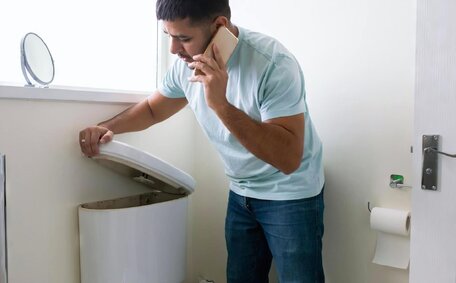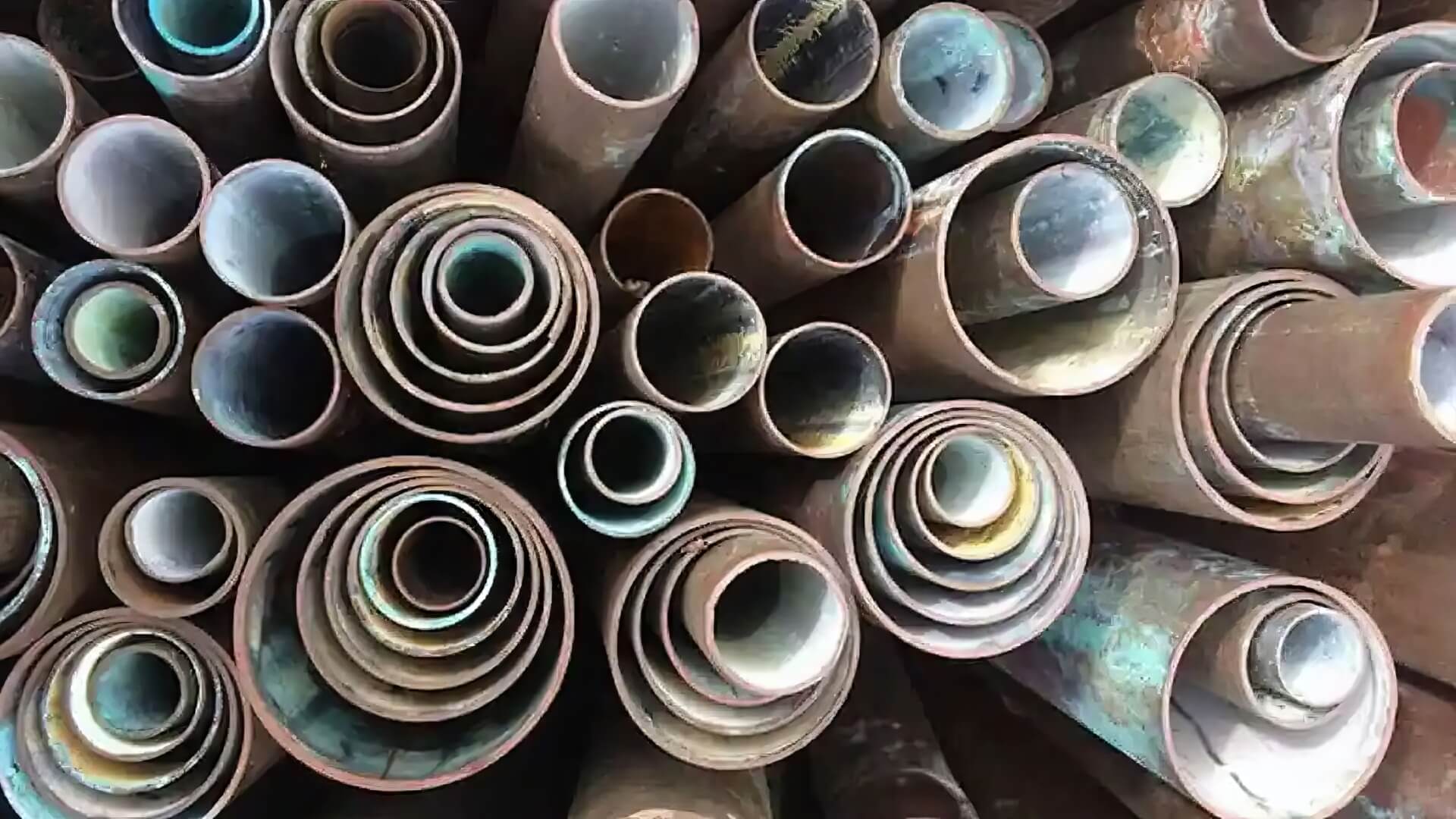
10 Signs Your Hot Water Heater Will Fail
If your water heater is old, leaking, rusty, noisy, not heating water properly or has low pressure, it could fail soon. Get your hot water system inspected today.
Read MoreSeveral common reasons might necessitate moving your gas meter:
While aesthetic considerations are valid, our service ensures that your meter relocation meets all regulatory codes and standards. Easy access ensures that your gas meter can be read regularly and relocated for any required maintenance. Apart from assessing the suitability of your preferred new location, our team also assists in contacting your gas distributor.
Safety is paramount when planning a gas meter relocation. Determining who can handle gas pipes and relocate meters is crucial, as it’s a task for licenced professionals only, given the high potential for gas leaks and explosions.
There are strict safety protocols, codes and regulations for moving gas infrastructure. DIY attempts at relocating a natural gas meter can lead to fines, service loss, or severe injury.
Certified gas fitters receive comprehensive training enabling them to:
Failing to have your gas meter moved by qualified technicians puts your family, your property, and your neighbourhood at risk of not addressing meter needs. Safety must take precedence over convenience and costs in any gas infrastructure project.
Relocating your gas meter entails obtaining several permits and completing requisite paperwork for approval.
Local councils require you to submit your applications for alterations involving your gas pipes at your home’s gas meter box or infrastructure affecting your supply. The essential documentation you can apply for includes:
For any service adjustments, You must inform your electricity and gas distributor to coordinate the temporary disconnection. They may be able to update service records based on your new meter location.
Contact your local council and gas distributor early to determine the specific requirements for relocating a gas meter. Considering potential delays due to fluctuating new connection processing times is prudent before proceeding with the project. Ensuring adherence to paperwork and approvals before relocating a gas meter is vital for a safe and legitimate installation.
Securing a licensed and certified professional, such as a plumber, is crucial for relocating a gas meter. They have undergone extensive training and will follow strict safety protocols to complete the relocation safely and legally.
Mortdale Plumbing provides certified gas fitters who diligently handle gas infrastructure projects. We can manage the entire process including permits and paperwork, liaising with your distributor, extending gas lines, capping obsolete pipes, and testing for leaks before restoring supply.
Qualified professionals must carry out gas meter relocations. Attempting DIY gas work risks fines, loss of service, and hazards like fire, explosion or gas leaks. Our expertise ensures safe, compliant, and smooth gas meter and pipeline relocations.
It’s vital to engage with your electricity meter provider or distributor at the initial stages when planning the relocation of your gas meter. They can provide guidance, approvals for both your gas electricity meter services, and coordination to facilitate the move.
To identify your gas retailer:
When handling your gas appliances, ensure you connect with your supplier or network operator with all relevant information at hand:
You need know that gaining the necessary approvals through your energy supplier is vital. If you choose to use our professional gas meter relocation services, we will manage all communications, including a site visit for smart meter transitions.
Relocating a gas meter requires careful planning, coordination, and meticulous installation for safety. The typical process includes:
This sequence ensures that infrastructure no longer in use is rendered safe, new components meet codes, and thorough testing reduces environmental risks. Our team oversees the entire process, including communication and planning, to ensure fast and smooth meter relocations.
To prepare for gas meter relocation, ensure clear access to the existing meter and proposed new site. Your gas fitter will ensure the new location complies with legal standards.
Standard preparations include:
A comprehensive checklist from your technician will outline necessary steps, like relocating fixtures to the outside wall. Advanced notice provides sufficient time to prepare your property. Proper access enables the gas fitters to work efficiently, safely reroute lines, and minimise service disruptions during your gas metre relocation.
As you anticipate the gas meter gas service relocation, the day’s schedule includes:
With qualified professionals at the helm, your role is to provide clear access and avoid using gas appliances until service is fully reinstated post-testing. You’ll receive timely updates at any stage of the relocation process from our diligent technicians. Typically, the move is completed within 2-3 hours from disconnection to appliance relighting.
Contact us with any questions, but please stay clear of the work areas for your own safety. We’ll also confirm the paperwork meets regulations and your distributor’s records are updated once your gas metre relocation is complete.
This is necessary to allow the gas fitters to safely disconnect, move and reinstall your metre.
To minimise inconvenience:
This interruption, though temporary, is essential for ensuring safety and allows for thorough testing of new installations before gas supply restoration. Technicians will make sure to complete all tasks thoroughly on the day of your meter’s relocation. They will ensure proper reconnection and check for leaks before reinstating the gas service.
Maintain communication with your gas fitter for updates during the relocation process. While short outages are typical, don’t hesitate to ask questions to understand what’s involved when preparing to move your gas metre.
The costs of relocating a gas meter can vary greatly, influenced by factors such as:
Gas meter relocations roughly cost between $800 and $2,000, though this is a general estimate and actual prices may vary. Simpler jobs usually fall at the lower end, while extensive rerouting or relocations to less accessible areas cost more.
Approval of development applications typically takes 1-2 weeks, a common query regarding timeframes. Gas distributors then require 5+ business days’ notice to schedule the outage. The relocation day requires a 2-3 hour window to safely disconnect, move, reinstall, and test the meter setup.
Keep in mind that lead times vary across council bodies and energy suppliers. Timeframes also depend on availability of qualified gas fitters to undertake the work. Discuss projected schedules with your chosen service provider for accurate planning.
While costs and timelines may vary, the focus remains on a secure and compliant installation of your new gas meter. We strive for prompt and precise service, keeping you informed throughout the relocation process.
Expect your gas supply to be interrupted for typically 2-3 hours during the meter relocation. This allows our technicians time to safely disconnect, cap and remove old pipes before installing the metre in the new approved position and restoring service.
Obtaining your gas supplier’s consent is obligatory before commencing a meter relocation. Yes, you must gain written consent from your gas supplier/network operator before moving a gas metre. Relocations without approval may lead to disconnection or legal repercussions. Our team will manage the entire approval process on your behalf.
In the event of a suspected gas leak during the move, evacuate immediately and call the emergency line. Do not turn power or appliances on or off. Licensed technicians will swiftly and securely locate and rectify the leak before continuing.
Professionals can move your gas meter more than just several metres if necessary, extending the underground gas line to its new location. As long as the site meets legal requirements, distance often isn’t an issue. We will assess the feasibility of pipe extensions to your chosen location.
The property owner is generally responsible for costs when aiming to move gas infrastructure that is deemed non-essential. The cost of relocating a gas meter typically ranges between $800 to $2000.
If your water heater is old, leaking, rusty, noisy, not heating water properly or has low pressure, it could fail soon. Get your hot water system inspected today.
Read MoreIf you have plumbing fixtures that are over 10 years old or showing signs of wear like leaks and cracks, it’s important to replace them to prevent more costly water damage in the future. Replacing worn fixtures improves water efficiency.
Read MorePipe relining is a trenchless method that renews pipes from the inside out. It involves draining, drying and scrubbing the pipe interiors before applying materials like silicone, PMMA or epoxy resins to create a resilient, soft, temporary liner inside the existing pipes.
Read MoreMortdale, 2223 NSW
We will call back as soon as possible.




